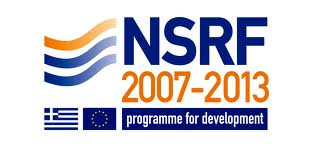The wide range of scientific disciplines (nuclear and high energy physics, astronomy, environmental sciences, optics and laser etc.) requiring radiation detection has led to construction of new materials (e.g. scintillation and semi-conductor crystals) capable to interact with and detect ionizing radiation (X-rays and gamma-rays). These materials constitute the detection body for the development of integrated detection systems fulfilling different research and radioprotection needs. There are two main categories of such systems; those which have to be installed in laboratories for operation support and surveillance and the mobile systems. Among the latter there are equipments capable also for in-situ measurement, which means that the instrument is placed itself over or directly in contact with the study environment providing data rapidly without further laboratory support and user surveillance. As concerns, the detection of radioactivity in the atmosphere and the soil many instruments are commercially available and some of them provide in-situ gamma-ray measurements, necessary for continuous monitoring and alert purposes. At the opposite there are so few commercially available systems for in-situ continuous monitoring of radioactivity in marine environment. Even those they have limited detection capabilities with minimum detectable activity greater than 1 Bq/L (for acquisition time of 1 hour). The main concept of the proposed project is to provide instrumentation and scientific methodology for this purpose.It aims to develop a new system for in-situ, low radioactivity levels monitoring in marine environment along with the necessary methodology and algorithms for automated, rapidly obtained results
This Is A Custom Widget
This Sliding Bar can be switched on or off in theme options, and can take any widget you throw at it or even fill it with your custom HTML Code. Its perfect for grabbing the attention of your viewers. Choose between 1, 2, 3 or 4 columns, set the background color, widget divider color, activate transparency, a top border or fully disable it on desktop and mobile.
This Is A Custom Widget
This Sliding Bar can be switched on or off in theme options, and can take any widget you throw at it or even fill it with your custom HTML Code. Its perfect for grabbing the attention of your viewers. Choose between 1, 2, 3 or 4 columns, set the background color, widget divider color, activate transparency, a top border or fully disable it on desktop and mobile.





